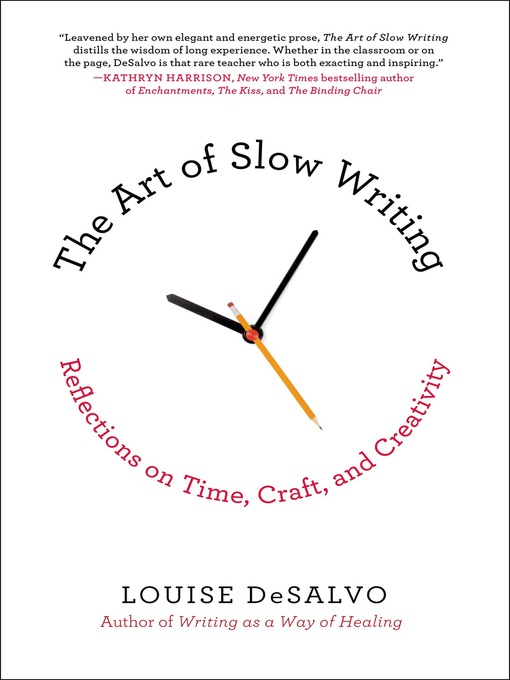
The Art of Slow Writing
Reflections on Time, Craft, and Creativity
کتاب های مرتبط
- اطلاعات
- نقد و بررسی
- دیدگاه کاربران
نقد و بررسی

Starred review from June 30, 2014
Memoirist and writing teacher DeSalvo (Writing as a Way of Healing) turns what might have been an exercise in navel-gazing into a lively and inspiring guide for writers of all stripes. Whether readers are taking their first stab at the Great American Novel or have a shelf full of books to their credit, they’re sure to benefit from DeSalvo’s insight into the many different methods employed by luminaries, such as Virginia Woolf, John Steinbeck, and Henry Miller, and contemporary authors, such as Michael Chabon, Stephen King, and Jonathan Franzen. DeSalvo also addresses the problem of not writing, sharing how authors like Anne Tyler and Alice Munro deal with everyday distractions, and ancillary topics such as the dreaded rejection letter, and the best way to deal with criticism. Readers can take solace in tips, such as “relax into the story,” practice daily, and be comfortable with the time it takes for work to become fully formed—and gain confidence in themselves, thanks to the knowledge that they’re not alone in their struggles. Buy two copies—the first will quickly sprout dog-ears. Agent: Joanne Wyckoff, Carol Mann Agency.

July 15, 2014
Note to aspiring writers: Slow down.Such is the primary advice from the author of Writing as a Way of Healing (1999) and of assorted memoirs and biographies. DeSalvo (Creative Writing and Literature/Hunter Coll.; On Moving: A Writer's Meditation on New Houses, Old Haunts, and Finding Home Again, 2009, etc.) structures her book in tiny chapters, some lists of things to do (with bullet points) and myriad examples from the works of writers whose methods mirror those she's recommending. Not surprisingly, Virginia Woolf appears continually (DeSalvo has published books about her), and there's a passage about Tobias Wolff, as well. Among the others making numerous appearances are Michael Chabon, Zadie Smith, Ian McEwan, Jeffrey Eugenides, Paul Auster and Joan Didion. DeSalvo also tells us in many chapters that she is currently at work on a book about her father and World War II, and she recommends highly her own ruminative style, which features multiple revisions. Although she mentions Joyce Carol Oates in a different context (writing about difficult experiences), she does not consider Oates' enviable productivity and her mastery of the art of fast writing. Similarly, she mentions Anthony Trollope's use of a writing diary but neglects to mention that speedy Anthony wrote his nearly 50 novels (and numerous other works-longhand) in only 35 years. DeSalvo does have lots of useful advice, however, much of which reduces to this: If you really want to write, you will make the time and organize yourself in ways that will make possible both your writing life and your "real" one. She offers many tips-some borrowed from others-that will help novices do so. Perhaps the book's most useful feature is its genial optimism-the you-can-do-this tone that beginning (and insecure) writers will find encouraging.Elementary in many ways but infused with the faith of a true believer.
COPYRIGHT(2014) Kirkus Reviews, ALL RIGHTS RESERVED.

























دیدگاه کاربران